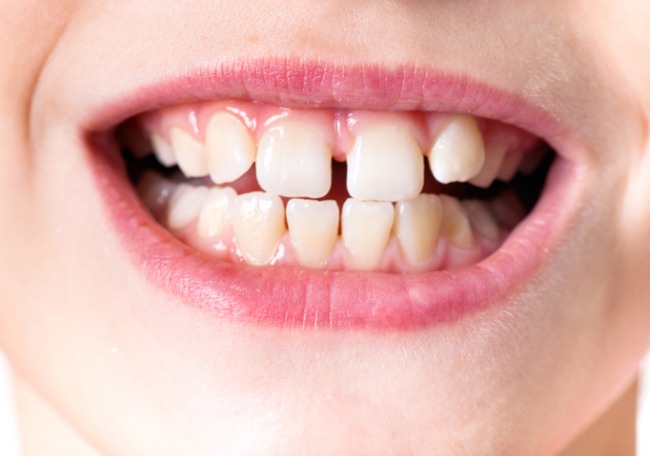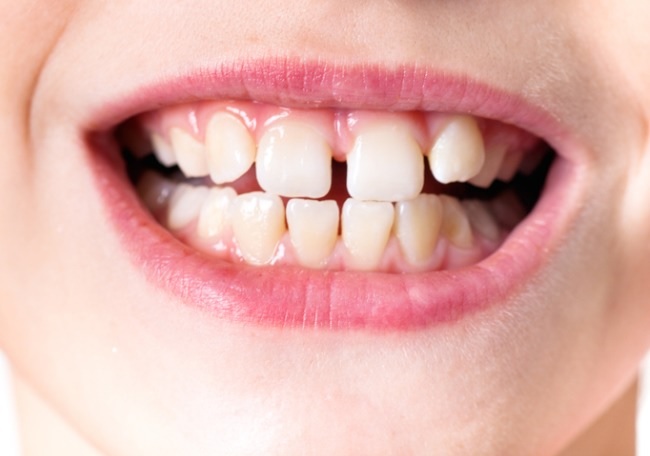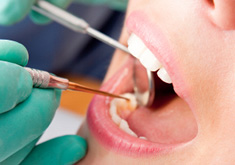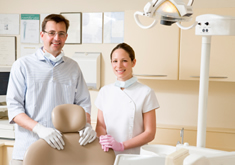Intervenciones para reducir el bruxismo en la infancia

1. Lobbezoo F, Ahlberg J, Glaros AG, Kato T, Koyano K, Lavigne GJ, de Leeuw R, Manfredini D, Svensson P, Winocur E (2013) Bruxism defined and graded: an international consensus. J Oral Rehabil 40: 2–4. https://doi.org/10.1111/joor.12011
2. Lobbezoo F, Ahlberg J, Raphael KG, Wetselaar P, Glaros AG, Kato T, Santiago V, Winocur E, De Laat A, De Leeuw R, Koyano K, Lavigne GJ, Svensson P, Manfredini D (2018) International consensus on the assessment of bruxism: report of a work in progress. J Oral Rehabil 45:837–844 https://doi.org/10.1111/joor.12663
3. Ophoff D, Slaats MA, Boudewyns A, Glazemakers I, Van Hoorenbeeck K, Verhulst SL (2018) Sleep disorders during childhood: a practical review. Eur J Pediatr 177:641–648. https://doi.org/ 10.1007/s00431-018-3116-z
4. Barbosa TS, Miyakoda LS, Pocztaruk RL, Rocha CP, Gavião MB (2008) Temporomandibular disorders and bruxism in childhood and adolescence: review of the literature. Int J Pediatr Otorhinolaryngol 72:299–314 https://doi.org/10.1016/ j.ijporl.2007.11.006
5. Antonio AG, Pierro VS, Maia LC (2006) Bruxism in children: a warning sign for psychological problems. J Can Dent Assoc 72: 155–159
6. Restrepo CC, Vásquez LM, Alvarez M, Valencia I (2008) Personality traits and temporomandibular disorders in a group of children with bruxing behaviour. J Oral Rehabil 35:585–593 https://doi.org/10.1111/j.1365-2842.2007.01838.x
7. Cheifetz AT, Osganian SK, Allred EN, Needleman HL (2005) Prevalence of bruxism and associated correlates in children as reported by parents. J Dent Child (Chic) 72:67–73
8. Manfredini D, Serra-Negra J, Carboncini F, Lobbezoo F (2017) Current concepts of bruxism. Int J Prosthodont 30:437–438. https://doi.org/10.11607/ijp.5210
9. Katsaros C (2001) Masticatory muscle function and transverse dentofacial growth. Swed Dent J Suppl:1–47
10. Manfredini D, Winocur E, Guarda-Nardini L, Paesani D, Lobbezoo F (2013) Epidemiology of bruxism in adults: a systematic review of the literature. J Orofac Pain 27:99–110. https://doi.org/10.11607/ jop.921
11. Machado E, Dal-Fabbro C, Cunali PA, Kaizer OB (2014) Prevalence of sleep bruxism in children: a systematic review. Dental Press J Orthod 19:54–61 https://doi.org/10.1590/2176- 9451.19.6.054-061.oar
12. Manfredini D, Restrepo C, Diaz-Serrano K, Winocur E, Lobbezoo F (2013) Prevalence of sleep bruxism in children: a systematic review of the literature. J Oral Rehabil 40:631–642. https://doi. org/10.1111/joor.12069
13. Restrepo C, Gómez S, Manrique R (2009) Treatment of bruxism in children: a systematic review. Quintessence Int 40:849–855
14. Arksey H, O’Malley L (2005) Scoping studies: towards a methodological framework. Int J Soc Res Methodol 8:19–32
15. Conde MC, Chisini LA, Sarkis-Onofre R, Schuch HS, Nor JE, Demarco FF (2017) A scoping review of root canal revascularization: relevant aspects for clinical success and tissue formation. Int Endod J 50:860–874. https://doi.org/10.1111/iej.12711
16. Rizk M, Aziz J, Shorr R, Allan DS (2017) Cell-based therapy using umbilical cord blood for novel indications in regenerative therapy and immune modulation: an updated systematic scoping review of the literature. Biol Blood Marrow Transplant 23:1607–1613. https://doi.org/10.1016/j.bbmt.2017.05.032
17. Chisini LA, Conde MCM, Grazioli G, Martin ASS, Carvalho RV, Nor JE, Demarco FF (2017) Venous blood derivatives as FBSsubstitutes for mesenchymal stem cells: a systematic scoping review. Braz Dent J 28:657–668. https://doi.org/10.1590/0103- 6440201701646
18. Chisini LA, Conde MCM, Grazioli G, Martin ASS, Carvalho RV, Sartori LRM, Demarco FF (2019) Bone, periodontal and dental pulp regeneration in dentistry: a systematic scoping review. Braz Dent J 30:77–95. https://doi.org/10.1590/0103-6440201902053
19. Carra MC, Huynh N, Fleury B, Lavigne G (2015) Overview on sleep bruxism for sleep medicine clinicians. Sleep Med Clin 10: 375–384. https://doi.org/10.1016/j.jsmc.2015.05.005
20. Carra MC, Huynh N, Morton P, Rompré PH, Papadakis A, Remise C, Lavigne GJ (2011) Prevalence and risk factors of sleep bruxism and wake-time tooth clenching in a 7- to 17-yr-old population. Eur J Oral Sci 119:386–394. https://doi.org/10.1111/j.1600-0722.2011. 00846.x
21. de Oliveira MT, Bittencourt ST, Marcon K, Destro S, Pereira JR (2015) Sleep bruxism and anxiety level in children. Braz Oral Res 29:1–5. https://doi.org/10.1590/1807-3107BOR-2015.vol29.0024
22. Murad MH, Sultan S, Haffar S, Bazerbachi F (2018) Methodological quality and synthesis of case series and case reports. BMJ Evid Based Med 23:60–63 https://doi.org/10.1136/ bmjebm-2017-110853
23. Bortoletto CC, Cordeiro da Silva F, Silva PFC, Leal de Godoy CH, Albertini R, Motta LJ, Mesquita-Ferrari RA, Fernandes KP, Romano R, Bussadori SK (2014) Evaluation of cranio-cervical posture in children with bruxism before and after bite plate therapy: a pilot project. J Phys Ther Sci 26:1125–1128. https://doi.org/10. 1589/jpts.26.1125
24. Meltzer LJ, Plaufcan MR, Thomas JH, Mindell JA (2014) Sleep problems and sleep disorders in pediatric primary care: treatment recommendations, persistence, and health care utilization. J Clin Sleep Med 10:421–426. https://doi.org/10.5664/jcsm.3620
25. Stuhr SH, Earnshaw DH, Duncombe AM (2014) Use of orthopedic manual physical therapy to manage chronic orofacial pain and tensiontype headache in an adolescent. J Man Manip Ther 22:51– 58. https://doi.org/10.1179/2042618613Y.0000000054
26. Karibe H, Shimazu K, Okamoto A, Kawakami T, Kato Y, WaritaNaoi S (2015) Prevalence and association of self-reported anxiety, pain, and oral parafunctional habits with temporomandibular disorders in Japanese children and adolescents: a cross-sectional survey BMC Oral Health 15-8 https://doi.org/10.1186/1472-6831-15-8
27. Barão VA, Gallo AK, Zuim PR, Garcia AR, Assunção WG (2011) Effect of occlusal splint treatment on the temperature of different muscles in patients with TMD. J Prosthodont Res 55:19–23 https:// doi.org/10.1016/j.jpor.2010.06.001
28. Kurt H, Alioglu C, Karayazgan B, Tuncer N, Kiliçoglu H (2011) The effects of two methods of class III malocclusion treatment on temporomandibular disorders. Eur J Orthod 33:636–641. https:// doi.org/10.1093/ejo/cjq114
29. Soares AS, Medeiros de Oliveira M, Burlamarqui Klautau E, Alves BP, da Silva Gomes CEV (2015) Analysis of the effectiveness of the type of equipment occlusive plan and soft in relief of pain in temporomandibular disorder. Oral Pathol Oral Med:389–398
30. Wahlund K, Nilsson IM, Larsson B (2015) Treating temporomandibular disorders in adolescents: a randomized, controlled, sequential comparison of relaxation training and occlusal appliance therapy. J Oral Facial Pain Headache 29:41–50. https://doi.org/10. 11607/ofph.1285
31. Wahlund K, List T, Larsson B (2003) Treatment of temporomandibular disorders among adolescents: a comparison between occlusal appliance, relaxation training, and brief information. Acta Odontol Scand 61:203–211
Comentarios
Para ver los comentarios de sus colegas o para expresar su opinión debe ingresar con su cuenta de IntraMed.










